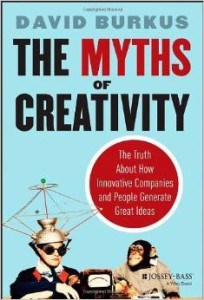“Heroes didn’t leap tall buildings or stop bullets with an outstretched hand; they didn’t wear boots and capes. They bled, and they bruised, and their superpowers were as simple as listening, or loving. Heroes were ordinary people who knew that even if their own lives were impossibly knotted, they could untangle someone else’s. And maybe that one act could lead someone to rescue you right back.” ~ Jodi Picoult
It was a typical beautiful and sunny morning in Brasilia. Teachers from the American School of Brasilia were preparing a churrasco, a Brazilian barbecue, to show their appreciation to the maintenance, cleaning, security, and support staffs for their daily contributions in support of the work of teachers, students, and our school’s educational program. This special day was filled with family activities, games of futebal, food, conversation, laughter, and relationship building.
It is days like this that we are reminded of the importance of community and the difference a positive and supportive culture can make in the lives of all members, particularly students and their education. With all due respect to Joseph Campbell’s seminal work, The Hero with a Thousand Faces, perhaps we can redefine the meaning of the Hero’s Journey to one more representative of Jodi Picoult’s vision where heroes are everyday people making a positive difference in the lives of others. Whether it is an act of kindness, a sacrifice for a stranger, a demonstration of empathy, or to simply listen, the seemingly small gestures of everyday heroes often lead to significant and meaningful differences in the lives of others.
Each morning, I see our guards welcoming every student by name, personalizing the start of their day and making our students feel special. I see the cleaning staff cleaning the walkway in the courtyard, seeing to every detail and taking pride in the appearance of the school. A few weeks ago, members of the maintenance department and support staff were on their way home after a long day when they heard that a water pipe had burst in the chemistry class and, without hesitation, dropped everything to return to school to spent three hours of their evening to ensure class could resume as normal the next day. Schools the world over can share similar stories about those special people whose daily actions, which often go unnoticed, make a difference in the lives of others. It is this ideal of daily contributions towards community building and the development of relationships that makes a school special.
The French existentialist, Simone de Beauvior, touches on this subject in her book, All Men are Mortal. In the 13th century, the main character of the novel, Fosca, attains the status of immortality. For several centuries, he travels the world, reads countless books, meets fascinating people and falls in love many times. Fosca has a life that a mortal human could only dream of. He has the opportunity to achieve anything a person could wish to attain.
But, there is a problem. Fosca’s immortality becomes burdensome as he is unable to find happiness, an idea further explored by Derek de Lint in his film about the novel: “Fosca is haunted by events from past centuries, living with the same mistakes over and over again, with war, cruelty and injustice. He must question whether immortality and love can exist at the same time or whether true love and commitment are only possible through the limitations of life. He eventually begins to desire mortality as a basic necessity for human happiness.”
Fosca desperately searches for meaning in his life but his immortality robs him of it. What he finally understands is that it is the finiteness of the human condition that forces us to embrace our lives and to live each moment with passion. And where is meaning to be found? This is a seemingly difficult question to answer. Fosca does not find meaning through power, studying, reading, position in society, travel, or the accumulation of wealth. Madame Beauvoir leaves the reader with the notion that everything in our lives, everything we strive for, everything we accumulate is meaningless with one exception: the relationships we have with others, the lives we touch and the lives we are touched by.
If a meaningful life is defined through relationships and our efforts to make a even a small and positive difference in the lives of others, then it is fitting to confer the title of “hero” to those dedicated support staff members working in all schools. Through small acts of kindness, our colleagues attain what Fosca desperately failed to achieve through immortality. Through their commitment to support the work of teachers, students, and parents each and every day, those individuals who oversee security, maintenance, cleaning, technology, business and secretarial affairs, contribute to building community and enhancing the lives of others in essential and significant ways. They are our everyday heroes.
[easyrotator]erc_69_1425127110[/easyrotator]
A Jornada de um Herói
“Heróis não são capazes de saltar por cima de prédios altos com um único impulso ou parar balas com uma mão; eles não usam botas ou capas. Eles sangram, se ferem e seus superpoderes são tão simples como ouvir ou amar. Os heróis são pessoas comuns e sabem que, mesmo que suas próprias vidas estejam cheia de nós, eles podem ajudar a quem precisa. E aquela única ajuda é capaz de te resgatar “ Jodi Picoult
Em uma típica bonita e ensolarada manhã em Brasília, os professores da Escola Americana de Brasília estavam preparando um churrasco para mostrar o seu apreço as equipes de manutenção, limpeza, segurança e apoio, pela sua contribuição diária em apoiar o trabalho dos professores, alunos e o programa educacional da escola. Esse dia especial foi preenchido com atividades para a família, futebol, comidas, conversas, risadas e construção das relações.
São em dias como esses que nós nos lembramos da importância da comunidade e da diferença que um apoio cultural positivo pode fazer na vida dos membros, em particular dos alunos e da sua educação. Com todo respeito ao trabalho pioneiro de Joseph Campbell, The Hero with a Thousand Faces, talvez possamos redefinir o significado da Jornada de um Herói a uma visão mais representativa de Jodi Picoult, onde os heróis são pessoas do nosso cotidiano, fazendo uma diferença positiva na vida de terceiros. Se é um gesto de carinho, um sacrifício para um estranho, uma demonstração de empatia ou simplesmente ouvir alguém, os gestos significativos dos heróis do nosso cotidiano, geralmente causam diferenças na vida dos outros.
A cada manhã, eu vejo os nossos guardas dando as boas-vindas para cada aluno, os chamando pelo nome, personalizando o início do dia deles e fazendo com que eles se sintam especiais. Eu vejo a equipe de limpeza limpando a calçada do pátio na frente da escola, cuidado de cada detalhe e se orgulhando da aparência da escola. Há algumas semanas, os membros do departamento de manutenção e apoio estavam a caminho de casa, depois de um longo dia, ouviram que um cano de água havia estourado na sala de química e, sem hesitarem, largaram tudo, voltaram para a escola e passaram mais 3 horas para garantir que tudo voltaria ao normal no dia seguinte. Escolas do mundo inteiro podem ter compartilhado histórias semelhantes sobre esse grupo de pessoas especiais, cujas ações diárias que, geralmente não são compartilhadas, fazem a diferença na vida dos outros. É esse tipo de contribuição diária para a construção da nossa comunidade e o desenvolvimento das relações que tornam uma escola especial.
O existencialista francês, Simone de Beauvior, aborda este assunto em seu livro, Todos os homens são mortais. No século 13, o personagem principal do romance, Fosca, alcança o status de imortalidade. Durante vários séculos, ele viaja pelo mundo, lê inúmeros livros, atende pessoas fascinantes e apaixona-se muitas vezes. Fosca tem uma vida que qualquer ser humano mortal sonha em ter. Ele tem a oportunidade de conseguir qualquer coisa que uma pessoa pode desejar alcançar.
Mas existe um problema. A imortalidade de Fosca se torna difícil, já que ele é incapaz de encontrar a felicidade, uma ideia mais explorada por Derek de Lint, em seu filme sobre o romance. “Fosca é assombrado por acontecimentos de séculos passados, pela convivência com os mesmos erros, com a guerra, a crueldade e injustiça. Ele deve questionar se: a imortalidade e o amor podem existir ao mesmo tempo ou se o verdadeiro amor e compromisso só são possíveis através das limitações da vida. Ele finalmente começa a desejar a mortalidade como uma necessidade básica para a felicidade humana.”
Fosca procura desesperadamente um sentido para a sua vida, mas a sua imortalidade lhe rouba isso. O que ele finalmente entende é que a finitude da condição humana é que nos obriga a abraçar nossas vidas e viver cada momento com paixão. E onde podemos encontrar o significado disso? Esta é uma pergunta aparentemente difícil de responder. O Fosca não encontra sentido através do poder, do estudo, da leitura, posição na sociedade, viagens, ou acumulando riquezas. Madame Beauvoir deixa o leitor com a noção de que tudo em nossas vidas, tudo o que nos esforçamos para conseguir, tudo o que acumulamos não tem significado, com uma exceção: as relações que temos com os outros, das vidas que tocamos e das vidas que nos tocam.
Se uma vida, significativa, é definida através de relacionamentos e dos nossos esforços para fazermos uma diferença pequena e positiva na vida dos outros, então é apropriado conferirmos o título de “heróis” as dedicadas equipes de apoio de todas as escolas. Através de pequenos atos de bondade, os nossos colegas atingiriam o que Fosca desesperadamente não conseguiu alcançar através da imortalidade. Através do seu compromisso em apoiar o trabalho dos professores, alunos e pais a cada dia, essas pessoas que cuidam da segurança, manutenção, limpeza, tecnologia, negócios e assuntos de secretariado, contribuem para a construção da comunidade e melhoraria da vida dos outros de maneira essencial e significativa. Eles são nossos heróis do cotidiano.


